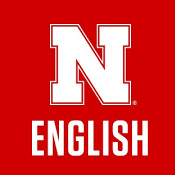English, Department of

Department of English: Faculty Publications
Document Type
Article
Date of this Version
Fall 2016
Citation
American Literary Realism, Fall 2016, Vol. 49, No. 1, pp. 63-89.
Abstract
“In reading over a package of letters from Sarah Orne Jewett,” Willa Cather wrote in her preface to the Mayflower Edition of The Best Stories of Sarah Orne Jewett (1925), “I find this observation: ‘The thing that teases the mind over and over for years, and at last gets itself down rightly on paper—whether little or great, it belongs to Literature.” Cather’s private letters and her public statements in the form of essays, interviews, and speeches testify abundantly that Jewett had teased Cather’s mind over and over in the years following her friend and mentor’s death in 1909. Furthermore, as Cather critics and biographers have noted, in editing and writing her preface to Best Stories, Cather staked a place both for Jewett and herself in literary history. In the rousing final paragraph of her preface Cather classes Jewett’s The Country of the Pointed Firs (1896) with Nathaniel Hawthorne’s The Scarlet Letter and Mark Twain’s Huckleberry Finn as one of “three American books which have the possibility of a long, long life.” Turning to Firs in particular, she continues, “I like to think with what pleasure, with what a sense of rich discovery, the young student of American literature in far distant years to come will take up this book and say, ‘A masterpiece!’” Critics have also noted interesting resonances between Cather’s editorial work and preface and her creative work occurring around the same time, especially her novel The Professor’s House (1925), which features the titular Godfrey St. Peter editing the journals of his dead friend, Tom Outland. ...
Cather’s control over the form in which The Country of the Pointed Firs and eleven Jewett stories appeared in 1925 was less than has been assumed. She reordered two stories in the existing plates of Firs and argued successfully for a two-volume set, for her own selection of stories for the second volume, and for the paratextual elements framing the volumes, but the volumes were produced from existing stereotype plates. If my hypothesis about her work with Jewett’s manuscripts in 1909–1910 is correct, she may have participated in the beginning of the process of the fracturing of the 1896 Firs, but in 1924, economic limits and her desire to appease Mary Jewett constrained her power to make over Jewett in her own modern image. By lending the prestige of her name and selecting stories for the second volume, she did contribute to establishing the shape of Jewett’s oeuvre as it would continue to circulate for much of the twentieth century. And even if her preface to the volumes was not entirely sincere or represents only one half of her engagement as a critic with Jewett’s work, she powerfully framed the experiences of generations of Jewett’s readers and gave voice to their feelings. Thirty years ago, I lived out her imagined script: I was that “young student of American literature,” already a Cather fan but a new reader of Jewett, who took up The Country of the Pointed Firs with “pleasure” and “a sense of rich discovery,” proclaiming “‘A masterpiece!’”
Included in
Comparative Literature Commons, English Language and Literature Commons, Modern Literature Commons, Reading and Language Commons


Comments
© 2016 by the Board of Trustees of the University of Illinois